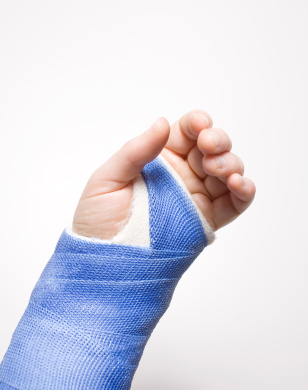By Ethan Guevin
Unless you are incredibly lucky, it is likely that at some point in your baseball career you will miss some time with an injury. Whether it’s a sore arm, a pulled muscle, or something more serious, it is frustrating to miss time on the field. At any level, injuries are tough for athletes. Because life and the season continue normally for everyone else, injured players often get the feeling that no one cares what is happening with them. Coaches and teammates turn their attention to whoever is filling in for you and it is easy, in the flow of a season, for coaches to forget to account for you in the practice plan. For these reasons, it is important that you take ownership of your time on the DL.
When you are healthy, everything falls into place and you know exactly what you are supposed to be doing. You have school, then after school, you have practice or a game, and after baseball you have school-work, and it all starts over the next day. At practices or games, you know exactly what to do and when to do it. Injuries turn your routine upside-down. With more downtime, it’s easy to be less productive and let time slip away. But you can’t do that, not if you want to play baseball at the next level.
Make sure you use your injury to strengthen other areas and remember that there is always something you can do to get better. Below is an extensive, but by no means comprehensive list of things you should be doing while you recover to continue improving your skills, even when you can’t fully participate.
- Talk to your doctor and meet with the athletic trainer to get a clear sense of what you can and cannot do. Ask about baseball activities and workout/fitness activities.
- Stay in shape in any way you can. Ask your doctor and/or trainer about alternative activities. Just because you have bicep tendonitis, it doesn’t necessarily mean you can’t run or just because you have a strained hamstring, it doesn’t mean you can’t do shoulder strengthening exercises. Be sure to get the okay from your doctor first.
- Develop a new routine. Using the tendonitis as an example again, instead of stretch, throw, defensive work, hit during practice, your routine might be, stretch, run poles, defensive glove work, one armed tee work. Your trainer can help you figure out what is best for your situation.
- Commit to your rehab! Listen carefully to your doctor and trainer. Review their plan. Schedule it out, write it down; make sure you stay on top of it. The trainer may be juggling many different players, so you need to be proactive and take ownership over your own recovery! Ask the trainer how to use time in the training room to “prehab” (do preventative care) in other areas.
- Do as much baseball activity as you are allowed by your doctor and trainer.
- Make sure your coaches know what you can and cannot do. Meet with them and ask about different ways you can be involved in the practice plan.
- Watch, watch, watch! What are the best players doing to make themselves better? What are the less productive players doing? By paying attention to others, you can learn a lot and get better without picking up a ball, bat or glove.
- Stay on top of your school work! Bad grades = less opportunities to play college baseball. Use any extra time you may have to get ahead.
- Work on being a great teammate. Being a good teammate is rule number one in baseball. Injuries provide you with an opportunity to help your teammates in times when you normally wouldn’t have opportunity to do so. Take advantage of it.
- Help the team be better in any way possible. Do a chart during a game, work on picking the opposing team’s signs, help out with fieldwork, etc. There are tons of ways to help the team, if you don’t know how, just ask your coach what you can do to help.
Sometimes injuries can be a blessing in disguise. By making the most of your time away from the field and taking ownership over your recovery, you may be surprised how much you can improve your skills while injured. How much you improve is up to you!







